Spinal Stenosis
|
Overview
The spinal column contains open spaces that create passageways for the spinal cord and the spinal nerves. Spinal stenosis is a narrowing of (or an intrusion into) these openings. This can cause a compression of the nerves. Spinal stenosis most commonly affects the cervical and lumbar regions of the spine. Anatomy Each vertebra has a large opening at the rear called the spinal canal. In the cervical and thoracic regions of the spine, the spinal cord travels through this space. In the lumbar region of the spine, this opening contains a bundle of nerve roots. Openings called foramina branch away from the spinal canal. These spaces provide pathways for the nerve roots that travel from the spine to other parts of the body. Stenosis In a spine with stenosis, one or more of these openings are narrowed. The spinal nerves can become compressed against the vertebral bone. This can interfere with nerve function. It can cause pain in the spine or in other parts of the body. Causes Stenosis is commonly caused by an excess growth of bone around the spinal nerves. This excess bone growth often results from osteoarthritis. Stenosis can also result from a dislocation or a fracture of the vertebral bone. Stenosis can be caused by soft tissue intruding into the spine's open spaces. Herniated discs, tumors, and thickened spinal ligaments can press against the spinal nerves. And in some cases, a person is born with a small spinal canal that does not provide enough room for the spinal nerves. Symptoms Symptoms of spinal stenosis can vary depending on the location and severity of the problem. Spinal stenosis can cause pain, weakness, numbness and tingling in the arms and legs. Spinal stenosis in the lower back commonly causes sciatica, a sensation of burning pain that can travel through the buttocks and down the legs. Spinal stenosis can also cause problems with control of the bladder and bowels. Treatment Treatment options for spinal stenosis may include anti-inflammatory medications, muscle relaxants and medications to relieve pain. Physical therapy may be recommended and steroid injections can often be beneficial. If conservative treatments have failed, you may be a candidate for Superion®; a minimally invasive procedure clinically proven to be effective in the treatment of lumbar spinal stenosis. |
|
